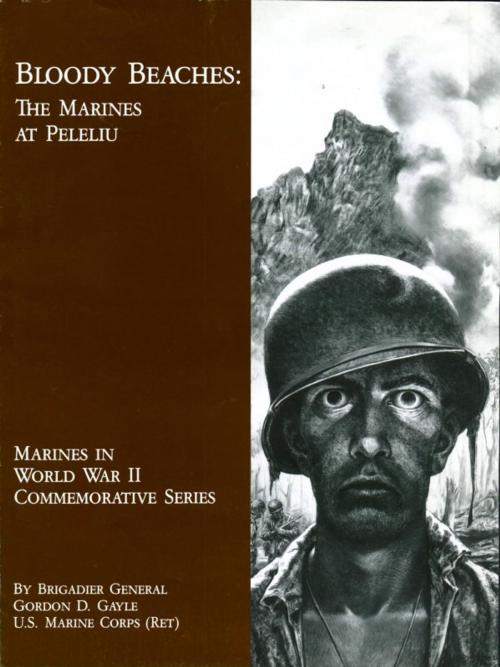Bloody Beaches: The Marines at Peleliu
War in the Pacific
Nonfiction, History, Military, United States, World War II, Biography & Memoir, Historical| Author: | Gordon D. Gayle (Ret), Desmond Gahan | ISBN: | 1230000462365 |
| Publisher: | Desmondous Publications | Publication: | June 1, 2015 |
| Imprint: | Language: | English |
| Author: | Gordon D. Gayle (Ret), Desmond Gahan |
| ISBN: | 1230000462365 |
| Publisher: | Desmondous Publications |
| Publication: | June 1, 2015 |
| Imprint: | |
| Language: | English |
On D-Day 15 September 1944, five infantry battalions of the 1st Marine Division’s 1st, 5th, and 7th Marines, in amphibian tractors (LVTs) lumbered across 600–800 yards of coral reef fringing smoking, reportedly smashed Peleliu in the Palau Island group and toward five selected landing beaches. That westward anchor of the 1,000-mile-long Caroline archipelago was viewed by some U.S. planners as obstacles, or threats, to continued advances against Japan’s Pacific empire.
The Marines in the LVTs had been told that their commanding general, Major General William H. Rupertus, believed that the operation would be tough, but quick, in large part because of the devastating quantity and quality of naval gunfire and dive bombing scheduled to precede their assault landing. On some minds were the grim images of their sister 2d Marine Division’s bloody assault across the reefs at Tarawa, many months earlier. But 1st Division Marines, peering over the gunwales of their landing craft saw an awesome scene of blasting and churning earth along the shore. Smoke, dust, and the geysers caused by exploding bombs and large-caliber naval shells gave optimists some hope that the defenders would become casualties from such preparatory fires; at worst, they would be too stunned to respond quickly and effectively to the hundreds of on-rushing Marines about to land in their midst.
On D-Day 15 September 1944, five infantry battalions of the 1st Marine Division’s 1st, 5th, and 7th Marines, in amphibian tractors (LVTs) lumbered across 600–800 yards of coral reef fringing smoking, reportedly smashed Peleliu in the Palau Island group and toward five selected landing beaches. That westward anchor of the 1,000-mile-long Caroline archipelago was viewed by some U.S. planners as obstacles, or threats, to continued advances against Japan’s Pacific empire.
The Marines in the LVTs had been told that their commanding general, Major General William H. Rupertus, believed that the operation would be tough, but quick, in large part because of the devastating quantity and quality of naval gunfire and dive bombing scheduled to precede their assault landing. On some minds were the grim images of their sister 2d Marine Division’s bloody assault across the reefs at Tarawa, many months earlier. But 1st Division Marines, peering over the gunwales of their landing craft saw an awesome scene of blasting and churning earth along the shore. Smoke, dust, and the geysers caused by exploding bombs and large-caliber naval shells gave optimists some hope that the defenders would become casualties from such preparatory fires; at worst, they would be too stunned to respond quickly and effectively to the hundreds of on-rushing Marines about to land in their midst.















